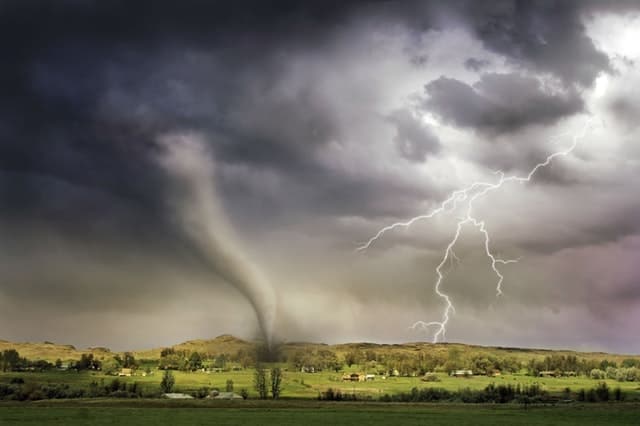When dealing with outdoor activities what’s better than just clear skies? Sunny weather, a breeze and warm but not too hot temperatures. If the said outdoor activity is being held within the day time, we hope for warm sunshine, and if the time of the activity deems to be in the darker hours, then the aspect of warm sunshine gets replaced with starry atmosphere.
Who doesn’t like the calm of the night and the seemingly scarce starry skies?
In either case, the wish for clear skies remains on that list no matter what. The reason for that is quite understandable: no one wants to be unexpectedly drenched in rain, covered in snow, or worse, struck by lightning.
While the first two experiences are essentially harmless and mostly welcomed in the name of adventure during travels, the third phenomenon can be fatal in most cases. Unfortunately, it is very plausible as well, since the United States itself experiences 100,000 thunderstorms on a yearly basis, around 10,000 of which are classified as severe.
That is why, most outdoor facilities that want to protect their inhabitants and patrons invest in a lightning detection system, which can warn them of upcoming lightning storms and threats.
Being Outdoors During a Thunderstorm is Not Advisable
With these measures being taken to protect lives against lightning storms, you may have already put two and two together to know that it is not safe to be outdoors during a lightning storm, no matter if you are camping by the lake or swimming by the beach during your vacation.
While you can just accept the fact of “being indoors during lightning” only because you are being told to do so, understanding the reasons behind it is what could provide you with the conviction to protect yourself and your loved ones during lightning storms at all costs – especially when the choice you have to make is between spending some more time outdoors at your travel destination or going back to your hotel room.

It Can Be Deadly
From 2007-2017, 328 people lost their lives to lightning strikes, all because they found themselves outdoors during an inopportune time. This is why, according to the Centers for Disease Control and Prevention (CDC), whenever you find yourself amidst an approaching or already landed thunderstorm, it is best to find yourself a shelter to ride out the storm.
In fact, the CDC is so adamant over urging people to seek out any sort of shelter than trying to be adventurous about it that it advises people to get in their car if they cannot find a concrete covered shelter in order to minimize their risks of being struck by lightning.
Putting yourself outdoors during a lightning storm is akin to swimming on a beach that has put out a shark warning. While the deadly fish may or may not attack you, the possibility of it doing so is very apparent. If you do not heed to the warnings and dive into the ocean, and if the shark decides to pay you a visit, the end results would be nothing but severe.
Lightning Storms Are Not Always Detectable Without Help
However, lightning storms cannot always be detected by the human eye and we only often know about them when they are literally over our heads. That is why, the aforementioned lightning detection procedures are important from a safety perspective, as they can warn you about lightning threats in a timely manner and save you the hassle and worry of finding shelter during a thunderstorm.
Keeping this in mind, whenever you are travelling outdoors especially during the months of summer, try to find places that have efficient warning systems such as a lightning detector in place.
And if you find yourself in the midst of a lightning storm anyway:
Go inside.
